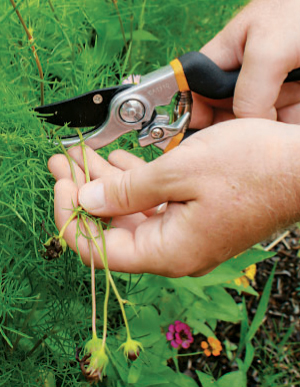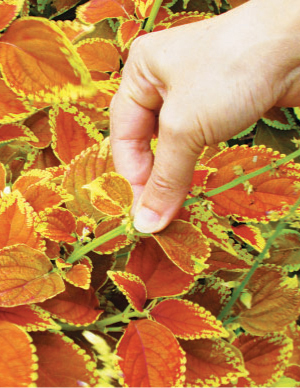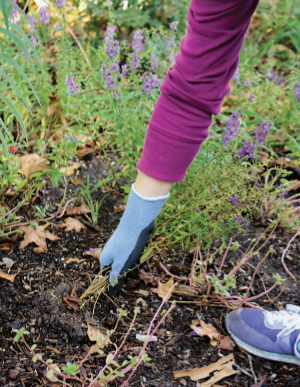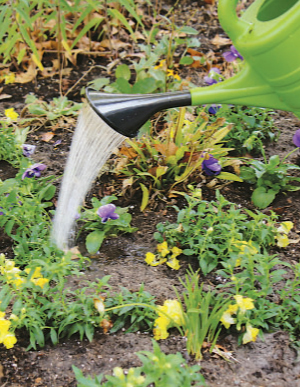Annual plants live for one growing season. These plants make up for their short lives by blooming continuously for four, five, or even six months. Make sure that you get the most out of your colorful annual plants by giving them the best care. Using these simple techniques in the garden will help you keep your plants blooming and growing for months.
What You’ll Need
![]() Fertilizer
Fertilizer
![]() Hand pruners, scissors, or snips
Hand pruners, scissors, or snips
![]() Shrub rake
Shrub rake
![]() Garden hose
Garden hose
![]() Watering wand
Watering wand
![]() Bucket
Bucket
![]() Garden twine
Garden twine
![]() Plant stakes
Plant stakes
Instant Green Thumb
When the petals fall off and the flowers fade, the plants start producing seeds, which is the plant’s signal that life is over. You need to trick the plant into continuing to bloom by cutting off the old flower and preventing seed formation.
Get out the scissors or pruners and shout, “Off with their heads!”
Annual Care Techniques
Deadhead Annual Flowers Weekly
Use your scissors, snips, or hand pruners to snip off dead flowers. Always cut and remove the flower stem at the place where it meets the main plant stem. If you only cut off the flower, you’ll have ugly stems hanging around. New growth only sprouts from buds along the main stem.

Pinch Off Flowers as Needed
Coleus is a popular annual plant with brightly colored leaves. Pinch off coleus flower stalks when they sprout so that the plant stays neat and tidy. If coleus gets too large, just cut off the top half of the plant stems. They will resprout.

Fertilize
Liquid fertilizers (including organic fish emulsion) come in concentrated forms that you mix with water and apply to the soil around plants. Some concentrates are poured into watering cans and mixed, while others can be spread by using hose attachments that do the mixing for you. Slow-release fertilizers include blood meal and bone meal (organic), and pelletized fertilizers (non-organic). Spread these fertilizers on the soil around the plants, following package directions for amount and frequency (generally every two or three months). With fertilizer, more is not better! Always read the instructions so you give the plants the right amount.
Pull Up and Replant
Part of annual flower care is making the “seasonal switch.” Starting in September (in zones 6 or higher) or April (in zones 5 and lower), you can plant pansies, flowering kale, snapdragons, and other cool-weather loving plants to enjoy during cooler weather. Once nighttime temperatures remain above 60 degrees, you can plant warm-weather flower transplants, including marigolds, annual salvia, petunias, and more. Pull out the old flowers or use pruners to cut them off at the ground.

Water
The difference between garden beds with big, beautiful annual flowers and pathetic, spindly, half-dead flowers is often water. You need to water more frequently right after you plant annual flowers, as much as daily for the first two or three weeks, and every three or four days for the first six weeks. That’s because it takes a while for the plants to grow roots into the surrounding soil, where there’s extra moisture. After six weeks, you can water plants once a week unless it is over 80 degrees every day without rain for a week or more. Count to ten while watering each plant, and aim the water at the soil right next to the plant rather than onto the leaves.
